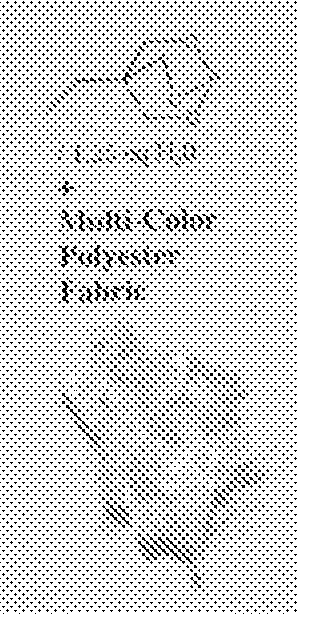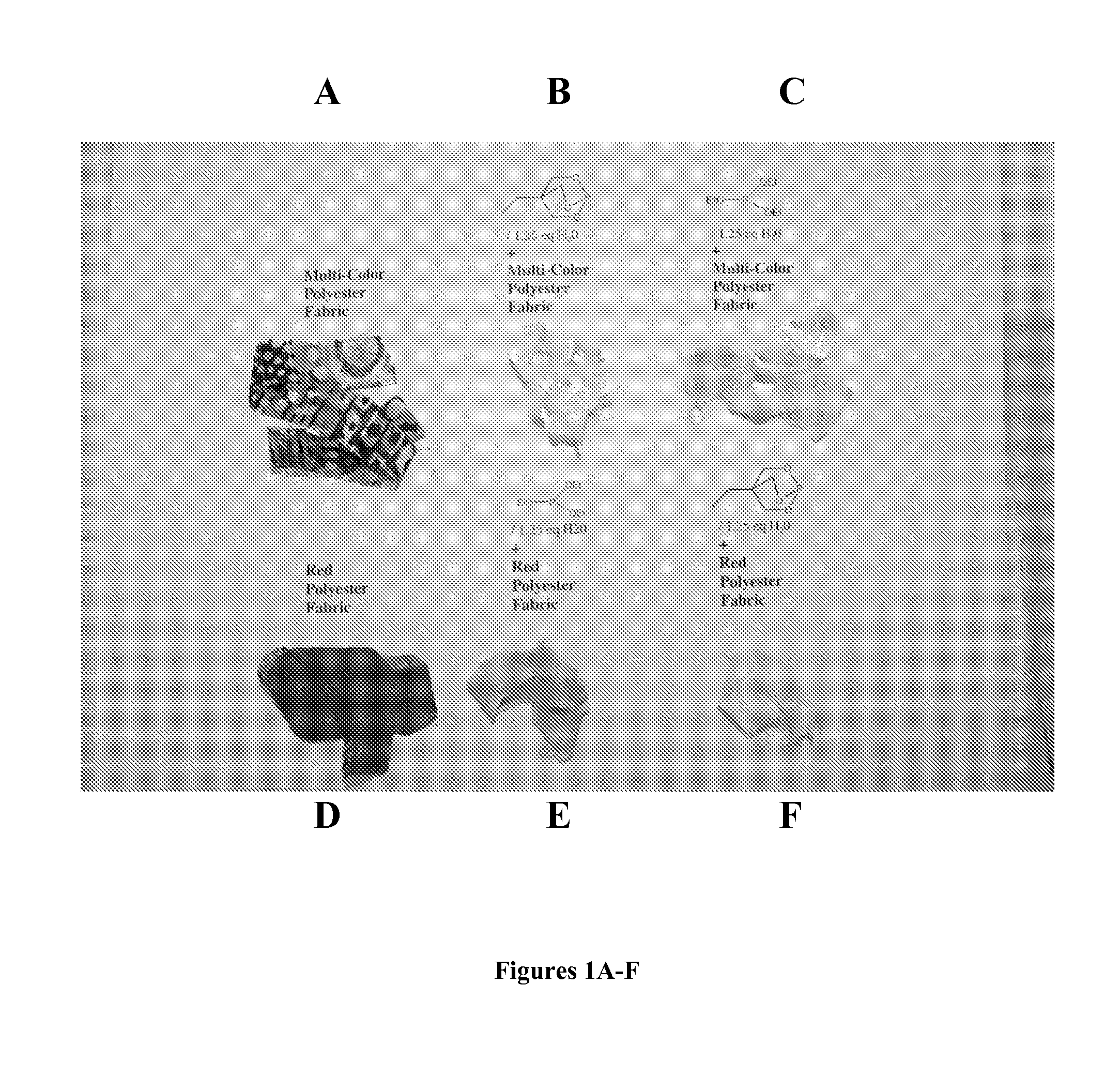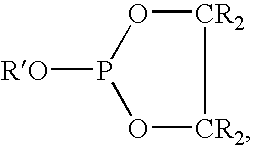Decolorization of fabrics using phosphoric and phosphorous acid derivatives
- Summary
- Abstract
- Description
- Claims
- Application Information
AI Technical Summary
Benefits of technology
Problems solved by technology
Method used
Image
Examples
example 1
Decoloration of Multi-Colored Polyester Fabric with P(OCH2)3CEt
[0025]All reactions were carried out in a 20 mL pressure tube with vigorous stirring using a magnetic stir bar. After reactions were complete, the fabrics were removed and washed with methanol to remove any phosphite / water / dye solution. The results of four preliminary experiments are as follows.
[0026]0.250 g multi-colored polyester fabric and 7.14 g of P(OCH2)3CEt and 1.25 eq H2O heated at 150° C. for 24 hrs gave almost complete removal of color. Only 1.2% loss in mass of fabric was observed which could be attributed to dye removal. See FIGS. 1A and 1B.
example 2
Decoloration of Red Colored Polyester Fabric with P(OCH2)3CEt
[0027]0.250 g red-colored polyester fabric and 7.14 g of P(OCH2)3CEt and 1.25 eq H2O heated at 150° C. for 24 hrs gave almost complete removal of color. See FIGS. 1D and 1F.
example 3
Decoloration of Red Colored Polyester Fabric with P(OCH2CH3)3
[0028]0.250 g red-colored polyester fabric and 7.68 mL of P(OCH2CH3)3 and 1.25 eq H2O heated at 150° C. for 24 hrs gave almost complete removal of color. Only a slight pinkish tint remained. See FIGS. 1D and 1E.
PUM
| Property | Measurement | Unit |
|---|---|---|
| Temperature | aaaaa | aaaaa |
| Temperature | aaaaa | aaaaa |
Abstract
Description
Claims
Application Information
 Login to View More
Login to View More - R&D
- Intellectual Property
- Life Sciences
- Materials
- Tech Scout
- Unparalleled Data Quality
- Higher Quality Content
- 60% Fewer Hallucinations
Browse by: Latest US Patents, China's latest patents, Technical Efficacy Thesaurus, Application Domain, Technology Topic, Popular Technical Reports.
© 2025 PatSnap. All rights reserved.Legal|Privacy policy|Modern Slavery Act Transparency Statement|Sitemap|About US| Contact US: help@patsnap.com



